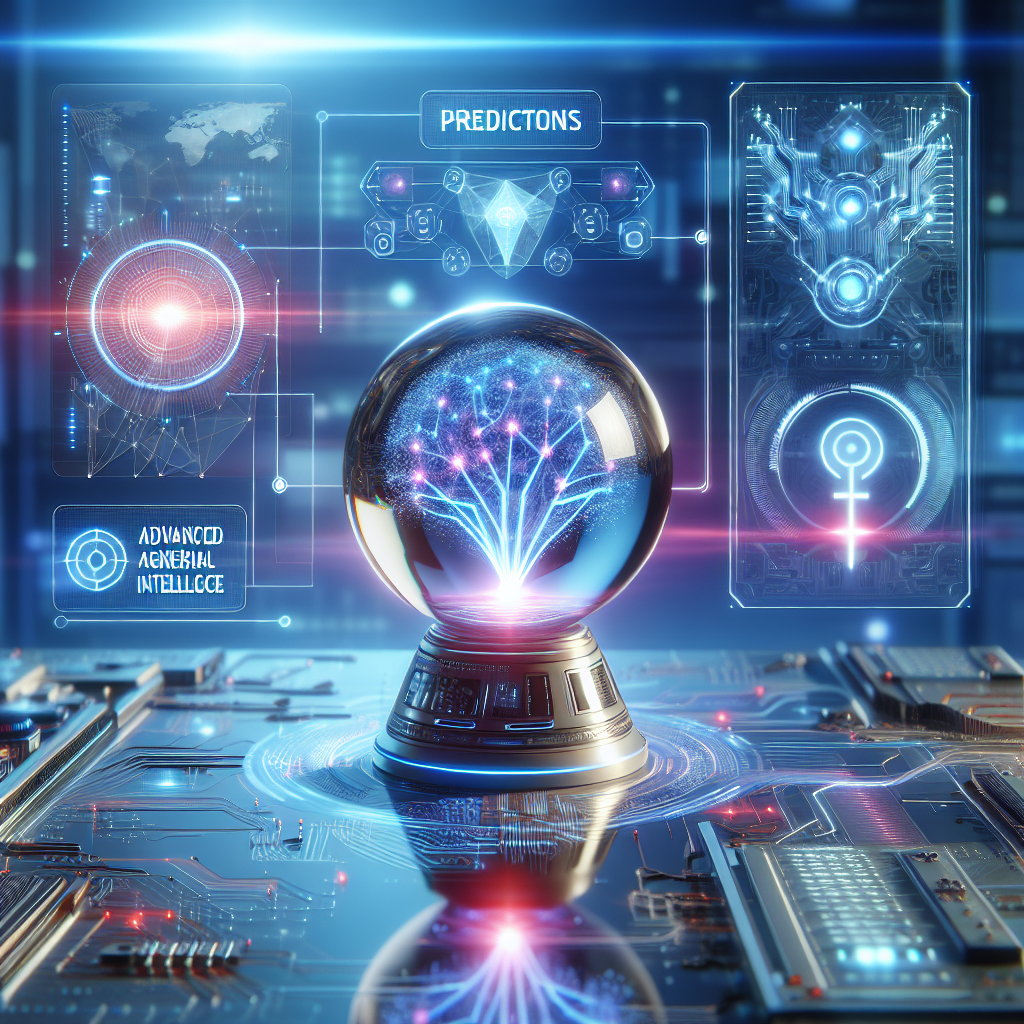The Future of AGI: Predictions and Possibilities
Artificial General Intelligence (AGI) refers to a machine that possesses the ability to understand, learn, and apply knowledge across a wide range of tasks, similar to a human being. While current AI technologies have made significant advancements in specific tasks such as image recognition, natural language processing, and game playing, AGI aims to develop machines that can perform a wide variety of tasks with human-like intelligence.
The concept of AGI has sparked both excitement and concern among researchers, policymakers, and the general public. On one hand, the potential benefits of AGI are vast, including advancements in healthcare, education, transportation, and many other sectors. On the other hand, there are concerns about the ethical implications of creating machines with human-like intelligence, as well as the potential risks of AGI surpassing human intelligence and control.
In this article, we will explore the current state of AGI research, make predictions about the future of AGI, and discuss the possibilities and challenges that come with the development of AGI.
Current State of AGI Research
While AGI remains a distant goal, researchers have made significant progress in developing AI technologies that exhibit human-like intelligence in specific tasks. For example, deep learning algorithms have enabled machines to recognize patterns in data, make decisions, and even generate creative works such as art and music.
Researchers are also exploring new approaches to AGI, such as neuro-symbolic AI, which combines the strengths of symbolic reasoning and deep learning to create more flexible and generalizable AI systems. By integrating symbolic reasoning with neural networks, researchers hope to achieve a more human-like understanding of the world and the ability to learn from limited data.
Despite these advancements, AGI remains a complex and challenging goal. Current AI technologies lack the ability to understand context, reason abstractly, and generalize knowledge across different domains. Achieving AGI will require breakthroughs in cognitive science, neuroscience, and computer science, as well as a deep understanding of human intelligence and consciousness.
Predictions for the Future of AGI
Predicting the timeline for achieving AGI is a difficult task, as it depends on a variety of factors such as technological advancements, research funding, and societal acceptance. However, many experts believe that AGI could be realized within the next few decades, with some predicting that it could happen as soon as 2040.
One of the key milestones on the path to AGI is creating AI systems that exhibit common sense reasoning, the ability to understand and reason about the world in a similar way to humans. Common sense reasoning is essential for AGI to navigate complex and ambiguous situations, make decisions based on incomplete information, and interact with humans in a natural and intuitive way.
Another important challenge for AGI is achieving artificial consciousness, the ability for machines to have subjective experiences, emotions, and self-awareness. While some researchers believe that consciousness is a necessary component of AGI, others argue that it may not be essential for creating intelligent machines that can perform a wide range of tasks.
Possibilities and Challenges of AGI
The development of AGI has the potential to revolutionize every aspect of society, from healthcare and education to transportation and entertainment. AGI could enable personalized medicine, personalized learning, autonomous vehicles, and intelligent virtual assistants that enhance our daily lives in ways we can’t yet imagine.
However, the rise of AGI also raises ethical, social, and existential questions that must be addressed. For example, how can we ensure that AGI is used for the benefit of humanity and not for harmful purposes? How can we prevent AGI from displacing human workers and exacerbating inequality? And how can we ensure that AGI systems are aligned with human values and goals?
To address these challenges, researchers are exploring a variety of approaches, such as value alignment, transparency, and accountability mechanisms that ensure that AGI systems are aligned with human values and goals. By designing AI systems that are transparent, interpretable, and accountable, we can ensure that AGI is developed ethically and responsibly.
FAQs
Q: What is the difference between AGI and narrow AI?
A: Narrow AI refers to AI systems that are designed for specific tasks, such as image recognition, natural language processing, and game playing. AGI, on the other hand, refers to AI systems that possess the ability to understand, learn, and apply knowledge across a wide range of tasks, similar to a human being.
Q: How will AGI impact the job market?
A: AGI has the potential to automate a wide range of tasks, from routine manual labor to complex cognitive tasks. While this could lead to job displacement in some sectors, it could also create new opportunities for human workers to focus on more creative, strategic, and high-level tasks that require human intelligence and judgment.
Q: What are the ethical implications of AGI?
A: The development of AGI raises a variety of ethical questions, such as how to ensure that AGI is used for the benefit of humanity, how to prevent AGI from being used for harmful purposes, and how to ensure that AGI systems are aligned with human values and goals. Ethical considerations are essential for the responsible development and deployment of AGI systems.
In conclusion, the future of AGI holds both promises and challenges. While AGI has the potential to revolutionize every aspect of society, from healthcare and education to transportation and entertainment, it also raises ethical, social, and existential questions that must be addressed. By addressing these challenges and working towards the responsible development of AGI, we can ensure that AGI benefits humanity and enhances our lives in meaningful ways.

